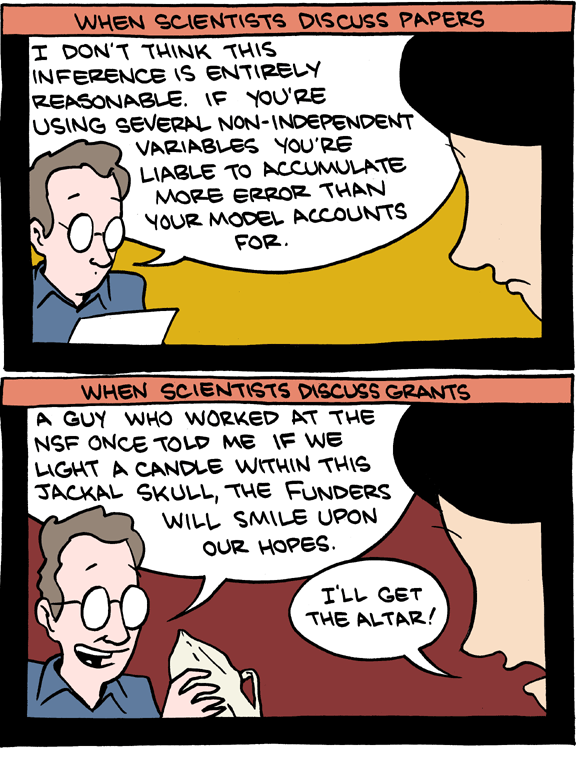The peer review process of eLife
Posted on Thu 14 April 2016 in Science
Together with my colleagues Marco Giordan, Andy Collins, and Attila Csikasz-Nagy we just published an analysis of the peer review process of eLife on F1000 here.
It was an interesting experience, and it was my first time leading a project from the start all the way to publication (and now, post publication peer review, as it should be).
The idea to critically analyze peer review came after NIPS (one of the most prestigious machine learning conferences) decided to do a very brave experiment and publicly examine their own peer review process. Briefly: for a subset of papers, NIPS assigned two completely independent teams of reviewers to review. After, they examined the overlap in the agreement between the two sets of reviewers, and the results were pretty bleak. For a longer summary, there's an excellent write up here. The key message is this: "about 57% of the papers accepted by the first committee were rejected by the second one and vice versa. In other words, most papers at NIPS would be rejected if one reran the conference review process (with a 95% confidence interval of 40-75%)." Publishing a paper at NIPS can completely change the arc of your career - so the idea that someone's future career is at the whims of chance is fairly discouraging.
Although the results were bleak, they were not surprising. Scientists tend to be a fairly rational bunch [citation_needed] but when it comes to getting papers published and grants accepted, they fall back on superstition and paranoia.
I know this first hand: with collaborators, we currently have two papers under review in fairly selective journals, and we spent months worth of work in trying to parry possible comments from reviewers/editors. For example, we had conversations like: "If we get X to review our paper, we need to make sure that Y is done because that's their theory and they will instantly reject the paper if we don't discuss it". Or "If our reviewer is a person who doesn't like mathematical modeling then we need to show the simpler simulations in the main text and the more complex ones in the supplementary." A truly embarrassing amount of work is done not because the authors think it makes the paper stronger, but because scientists are utterly paranoid about what will happen during the peer review process.
There are two main reasons for this paranoia. The first one is the disproportionate influence played by grants obtained/impact factor when evaluating scientists. The current system really sucks, but this is an area where only people with actual power to change the incentive structure (professors on tenure committees, leaders of funding bodies, etc) can make a difference. The second reason is that the peer review process is remarkably un-transparent and in the absence of real information people fall back on anecdotes and superstition. I thought that this was an area where I could actually give a small contribution.
With that in mind, after NIPS published their experiments, I reached out to the eLife editorial team (I had an excellent experience publishing a paper there previously, and they have a strong commitment to improving publishing) about doing a serious statistical analysis of their peer review process. Their team (Mark Peterson, Peter Rodgers, and especially Andy Collins) was incredibly pleasant to work with, and really cared about improving scientific publishing. Unfortunately, we were unable to actually do randomized controlled experiments the way NIPS did. eLife is growing very quickly (data in the paper!) and splitting up papers with dual review tracks would have been too taxing for their resources at this point.
What we ended up doing instead was looking at what factors influence how quickly a paper gets published, and what influences how often a paper gets cited. More importantly, we make a very interesting dataset available for everyone to analyze however they want, and we have the code to reproduce almost every step of our analysis.
Further Steps:
The data I published is a snapshot of the situation of eLife as of early 2016. Since all the scripts I used are online, it will be interesting to monitor the situation and see how things change in the future. Further, F1000 makes it very easy to add new versions of a paper, so I am planning on trying to extend the work and examine other effects, such as:
- http://www.nature.com/news/papers-with-shorter-titles-get-more-citations-1.18246
- http://www.nature.com/news/rejection-improves-eventual-impact-of-manuscripts-1.11583
- http://link.springer.com/article/10.1007/s11192-016-1936-z
